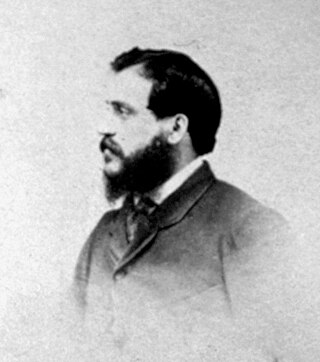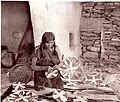
Martín Chambi Jiménez was a Peruvian photographer, originally from Puno, in southern Peru. He was one of the first major Indigenous Latin American photographers.

Vroman's Bookstore is reportedly the oldest and largest independent bookstore by multiple news media reporters in Southern California.

Edward Sheriff Curtis was an American photographer and ethnologist whose work focused on the American West and on Native American people. Sometimes referred to as the "Shadow Catcher", Curtis traveled the United States to document and record the dwindling ways of life of various native tribes through photographs and audio recordings.
John Veltri is a photographer who was born in 1938 in California.

Adolfo Farsari was an Italian photographer based in Yokohama, Japan. His studio, the last notable foreign-owned studio in Japan, was one of the country's largest and most prolific commercial photographic firms. Largely due to Farsari's exacting technical standards and his entrepreneurial abilities, it had a significant influence on the development of photography in Japan.

Grace Carpenter Hudson (1865–1937) was an American painter based in Northern California. She was nationally known during her lifetime for a numbered series of more than 684 portraits of the local Pomo natives. She painted the first, National Thorn, after her marriage in 1891. Her last work was completed in 1935.

Felice Beato, also known as Felix Beato, was an Italian–British photographer. He was one of the first people to take photographs in East Asia and one of the first war photographers. He is noted for his genre works, portraits, and views and panoramas of the architecture and landscapes of Asia and the Mediterranean region. Beato's travels gave him the opportunity to create images of countries, people, and events that were unfamiliar and remote to most people in Europe and North America. His work provides images of such events as the Indian Rebellion of 1857 and the Second Opium War, and represents the first substantial body of photojournalism. He influenced other photographers, and his influence in Japan, where he taught and worked with numerous other photographers and artists, was particularly deep and lasting.
Ray Manley was an American photographer whose photographs of Arizona helped increase tourism and migration to Arizona.

Gertrude Käsebier was an American photographer. She was known for her images of motherhood, her portraits of Native Americans, and her promotion of photography as a career for women.

Lawrence Clark Powell was an American librarian, literary critic, bibliographer and author of more than 100 books. Powell "made a significant contribution to the literature of the library profession, but he also writes for the book-minded public. His interests are reflected in the subjects that recur throughout his writings; these are history and travel, especially concerning the American Southwest, rare books, libraries and librarianship, the book trade, and book collecting."

John Karl Hillers was an American government photographer.
Charles H. Carpenter was an American photographer. He is notable for serving as the first photographer for the Field Museum, holding that position from 1899 to 1947. He took over 900 photos of the Hopi in 1900 as part of George A. Dorsey' s Stanley McCormick Hopi Expedition to Arizona and produced 2,000 negatives at the Louisiana Purchase Exposition of 1904.

Hulleah J. Tsinhnahjinnie is a Navajo Nation photographer, museum director, curator, and professor. She is living in Davis, California. She serves as the director of the C.N. Gorman Museum and teaches at University of California, Davis.

Photography by indigenous peoples of the Americas is an art form that began in the late 19th century and has expanded in the 21st century, including digital photography, underwater photography, and a wide range of alternative processes. Indigenous peoples of the Americas have used photography as a means of expressing their lives and communities from their own perspectives. Native photography stands in contrast to the ubiquitous photography of indigenous peoples by non-natives, which has often been criticized as being staged, exoticized, and romanticized.

Kate Cory was an American photographer and artist. She studied art in New York, and then worked as commercial artist. She traveled to the southwestern United States in 1905 and lived among the Hopi for several years, recording their lives in about 600 photographs.

Roland W. Reed, an American artist and photographer, was part of an early 20th century group of photographers of Native Americans known as pictorialists.
Matika Wilbur, is a Native American photographer and educator from Washington state. She is an enrolled citizen of the Tulalip Tribes of Washington and a descendant of the Swinomish people. She is best known for her photography project, Project 562.
Zoë Marieh Urness is a photographer of Alaskan Tlingit and Cherokee Native American heritage. She creates portraits of modern Indigenous cultures in traditional regalia and settings.

Elias Atkinson Bonine was an American photographer. Bonine was known for his portraits of 19th century Native Americans.

Carl Everton Moon was an American photographer, book and magazine illustrator, painter and writer focused on Native American subjects. He has been called "the imitator of Edward Curtis" and "the last of the great early photographers to go west".























